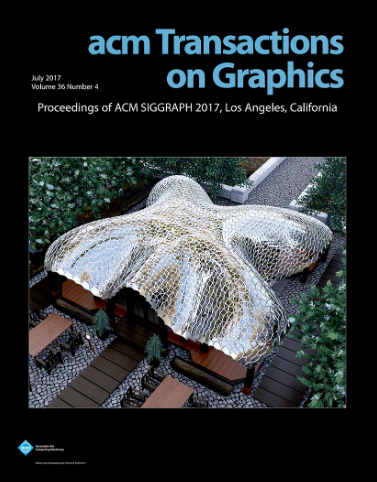Unbiased Differential Visibility Using Fixed-Step Walk-on-Spherical-Caps And Closest Silhouettes
IF 9.5
1区 计算机科学
Q1 COMPUTER SCIENCE, SOFTWARE ENGINEERING
引用次数: 0
Abstract
Computing derivatives of path integrals under evolving scene geometry is a fundamental problem in physics-based differentiable rendering, which requires differentiating discontinuities in the visibility function. Warped-area reparameterization is a powerful technique to compute differential visibility, and key is construction of a velocity field that is continuous in the domain interior and agrees with defined velocities on boundaries. Robustly and efficiently constructing such fields remains challenging. We present a novel velocity field construction for differential visibility. Inspired by recent Monte Carlo solvers for partial differential equations (PDEs), we formulate the velocity field via Laplace's equation and solve it with a walk-on-spheres (WoS) algorithm. To improve efficiency, we introduce a使用固定步走球帽和最接近的轮廓的无偏微分可见性
在不断变化的场景几何中计算路径积分的导数是基于物理的可微渲染中的一个基本问题,这需要对可见性函数中的不连续点进行微分。翘曲区域重参数化是计算差分可见性的一种有效方法,其关键是构造一个在区域内部连续且在边界上与定义速度一致的速度场。稳健而高效地构建此类油田仍然具有挑战性。提出了一种新的差分能见度速度场构造方法。受最近的偏微分方程(PDEs)蒙特卡罗求解器的启发,我们通过拉普拉斯方程来表达速度场,并使用球上行走(WoS)算法求解。为了提高效率,我们引入了一种固定步长WoS,该WoS在固定步长计数后终止随机行走,从而导致连续但非谐波的速度场仍然适用于扭曲区域的重新参数化。此外,为了将我们的方法实际应用于复杂的3D场景,我们提出了一个有效的圆锥查询来查找边界上最接近的轮廓。圆锥查询在单位球面上寻找测地线距离下的最近点,与WoS计算欧几里得距离的最近点查询类似。因此,我们的方法将WoS推广到单位球体上的球形帽上执行随机游动。我们证明,这使得微分可见性的一个更鲁棒和有效的无偏估计。
本文章由计算机程序翻译,如有差异,请以英文原文为准。
求助全文
约1分钟内获得全文
求助全文
来源期刊

ACM Transactions on Graphics
工程技术-计算机:软件工程
CiteScore
14.30
自引率
25.80%
发文量
193
审稿时长
12 months
期刊介绍:
ACM Transactions on Graphics (TOG) is a peer-reviewed scientific journal that aims to disseminate the latest findings of note in the field of computer graphics. It has been published since 1982 by the Association for Computing Machinery. Starting in 2003, all papers accepted for presentation at the annual SIGGRAPH conference are printed in a special summer issue of the journal.
 求助内容:
求助内容: 应助结果提醒方式:
应助结果提醒方式:


